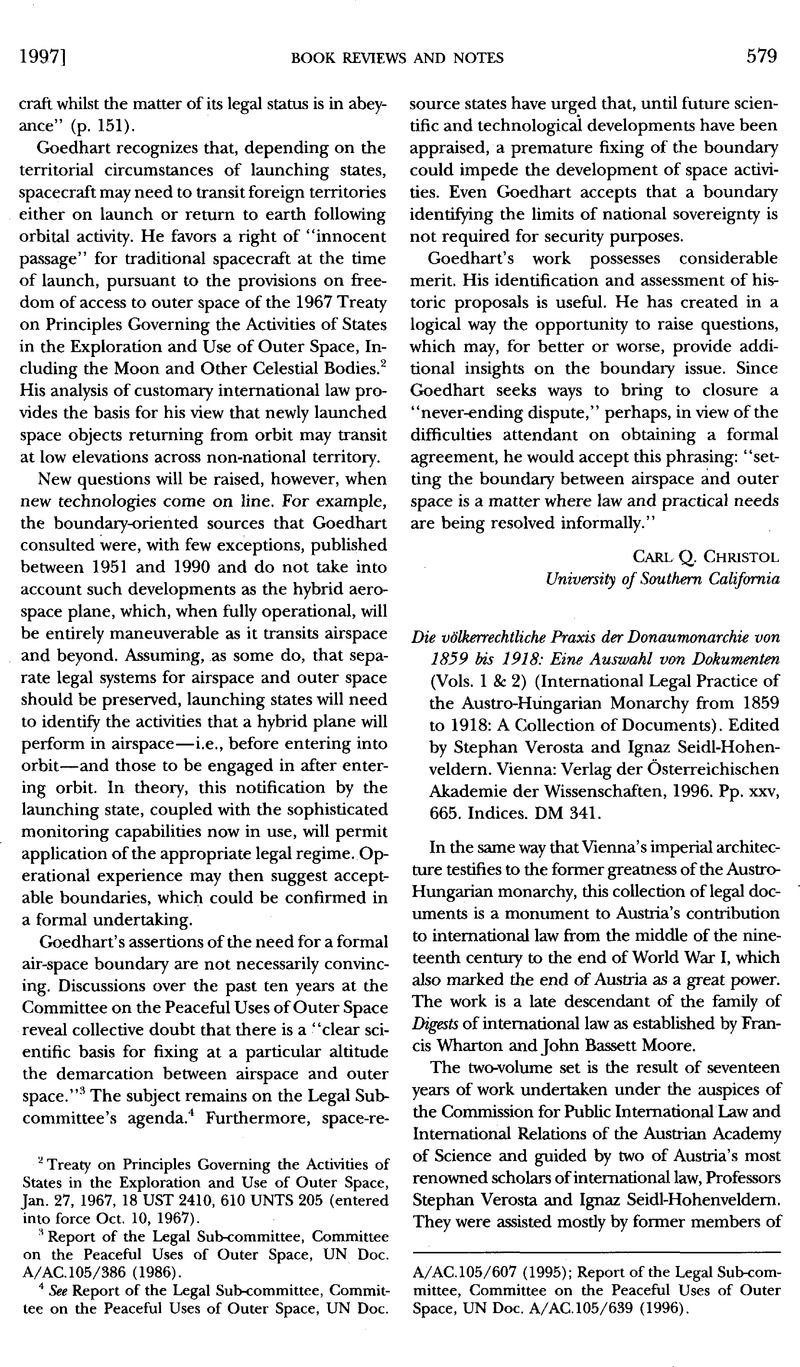No CrossRef data available.
Article contents
Die völkerrechtliche Praxis der Donaumonarchie von 1859 bis 1918: Eine Auswahl von Dokumenten (Vols. 1 & 2) (International Legal Practice of the Austro-Hungarian Monarchy from 1859 to 1918: A Collection of Documents). Edited by Stephan Verosta and Ignaz Seidl-Hohenveldern. Vienna: Verlag der Österreichischen Akademie der Wissenschaften, 1996. Pp. xxv, 665. Indices. DM 341.
Published online by Cambridge University Press: 27 February 2017
Abstract

- Type
- Book Reviews and Notes
- Information
- Copyright
- Copyright © American Society of International Law 1997
References
1 “That’s too bad, but it’s not we who have produced this situation. Besides, the interests and aspirations of peoples change with the times, and treaties are never written for eternity” (editor’s translation).
2 “Naturally, great countries are always called upon to exert a certain influence on the states on which they border” (editor’s translation).
3 In contrast, the recently published third series of La prassi italiana di diritto intemazionale (The Italian Practice of International Law) devotes seven volumes just to the years 1919-1925. See Tullio, Treves, Book Review, 90 AJIL 715 (1996)Google Scholar.
4 Claude, Inis L. Jr., Swords into Plowshares: The Problems and Progress of International Organization 28 (4th ed. 1971)Google Scholar.
5 See Stephan, Verosta, Kollektivaktionen der Machte des Europäischen Konzerts, 1886-1914 (Collective Measures Taken by the Powers of the Concert of Europe, 1886-1914) (1988)Google Scholar.
6 According to Oppenheim/Lauterpacht:
A Real Union is in existence when two sovereign States are, by an international treaty, recognised by other Powers, linked together for ever under the same monarch, so that they make one and the same International Person. A Real Union is not itself a State, but merely a union of two full sovereign States which together make one single but composite International Person.. . .At present there is no Real Union in existence, that of Sweden-Norway having been dissolved in 1905, and that of Austria-Hungary having come to an end by die collapse of die Austro-Hungarian Empire in 1918 . . . .
1 Lassa F. L. Oppenheim, International Law 171—73 (Hersch, Lauterpacht ed., 8th ed. 1955)Google Scholar (citations omitted).




